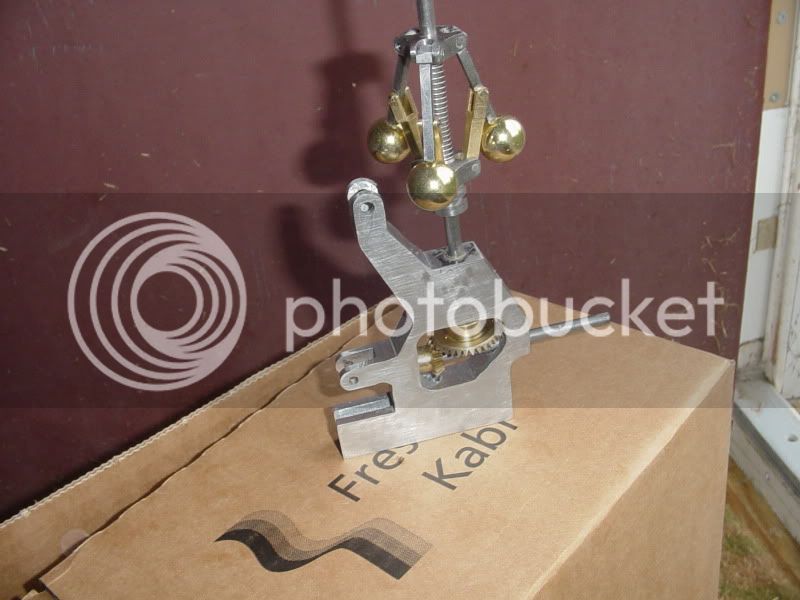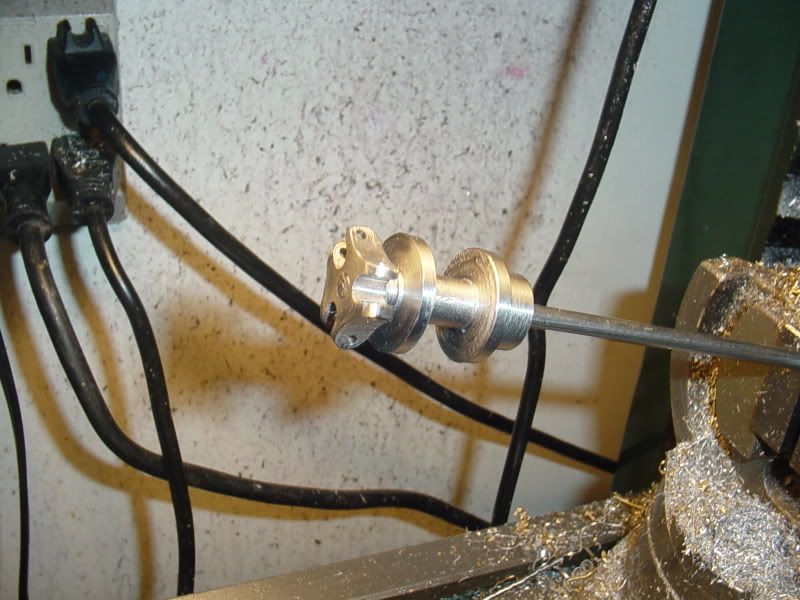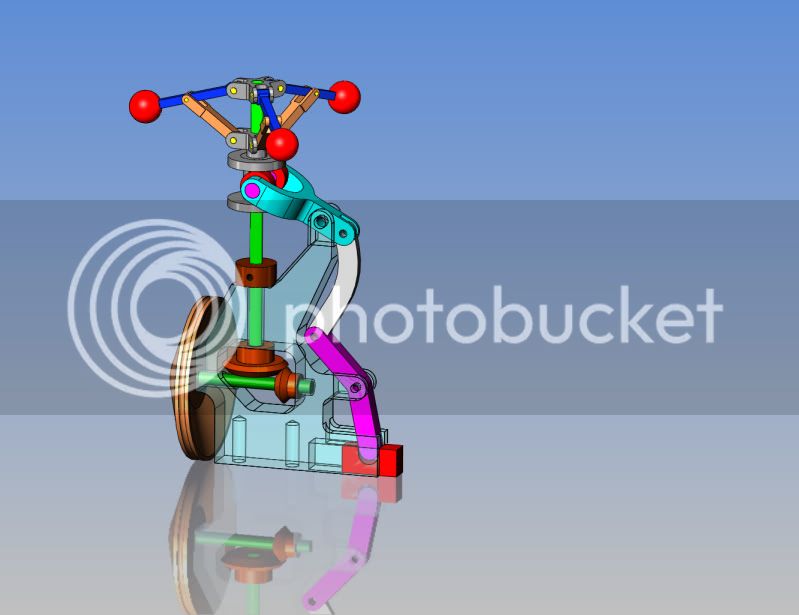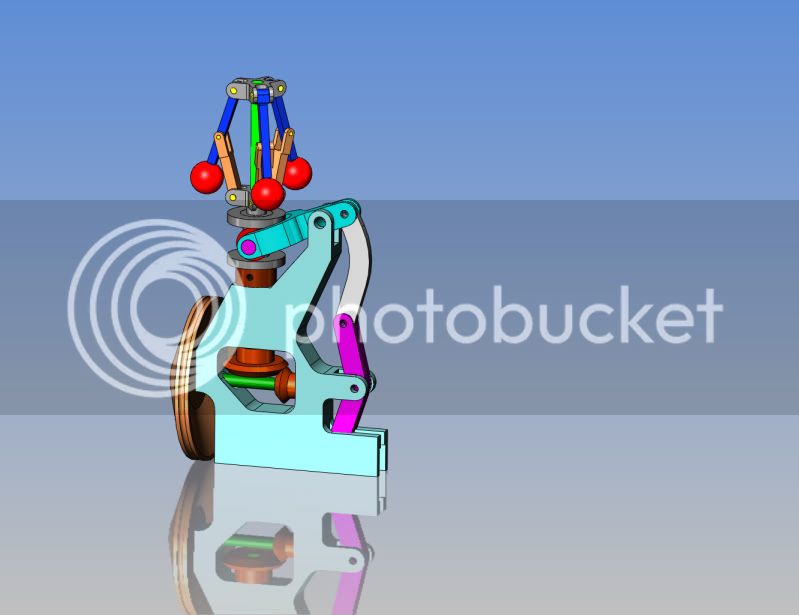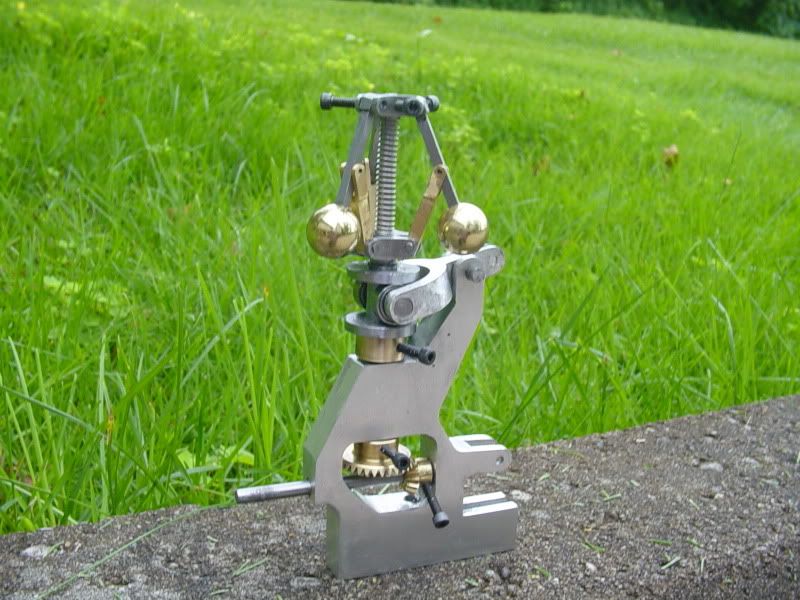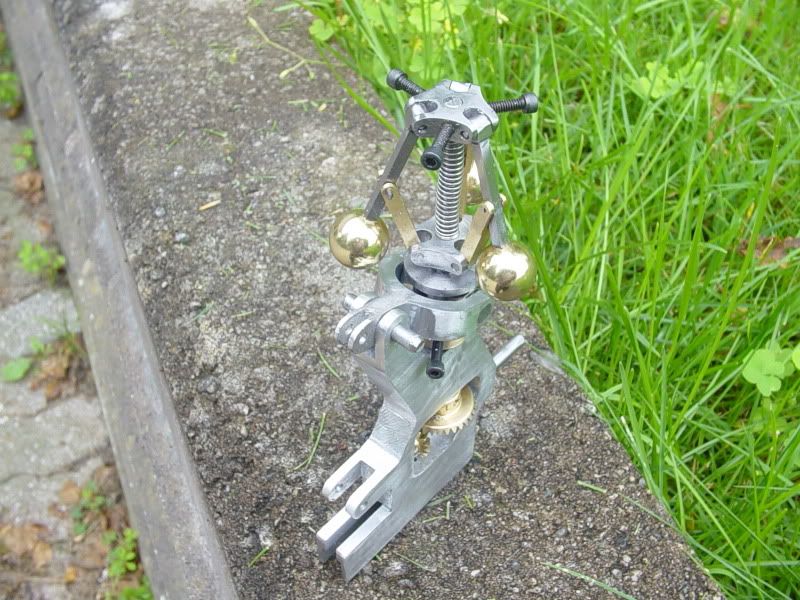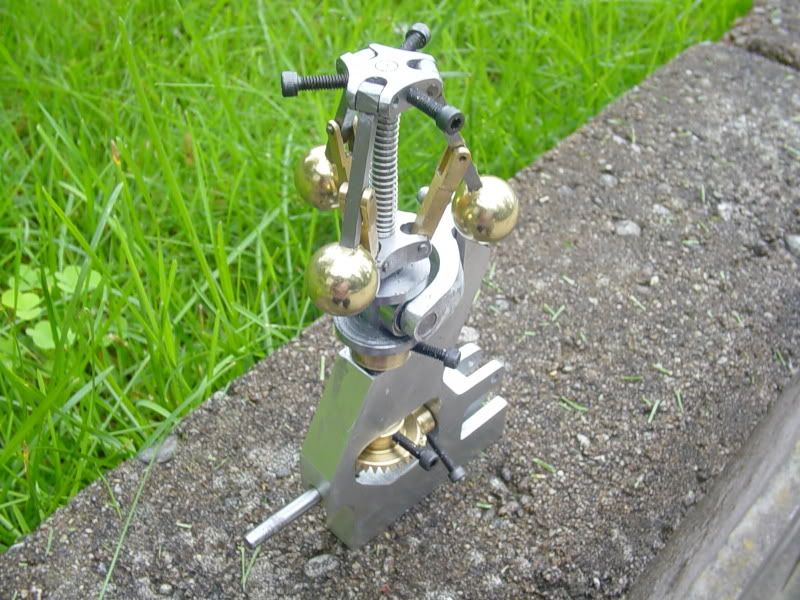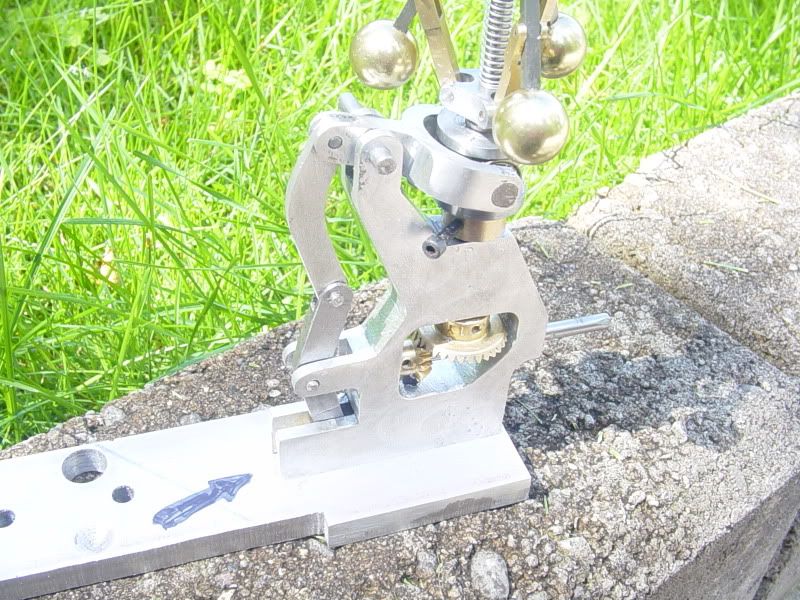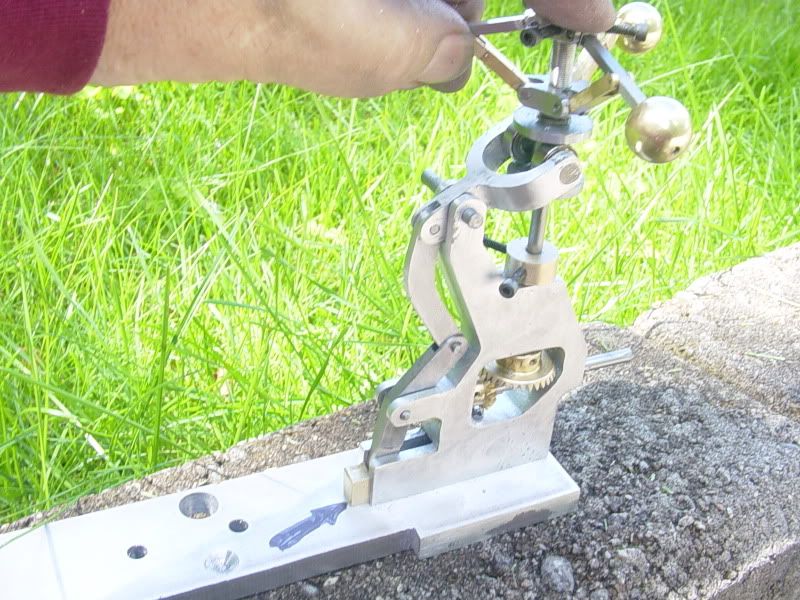Ah, I understand that now George.
Looking excellent by the way Brian, It will be interesting to see your running experiments. How strong is that spring and will it be run 1:1 speed? Suppose you've already got a bit of reduction, apologies if I've missed it, what are the bevel gears 1:3 or something? The reason I ask is, the weight of those 3 balls and the spring +gearing, I think will cause quite a fair bit of drag and it might not 'miss' very much - i.e. it when it does miss, it will slow down quickly despite the heavier flywheel and hit again. I could be wrong but I guess there is going to be some tweaking of the spring pressure required, so George's idea of an adjustable tension could be a good one.
